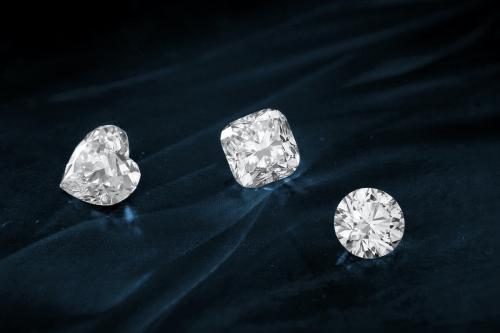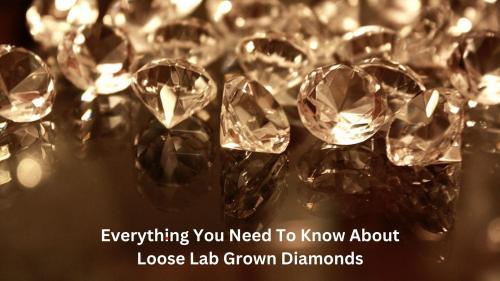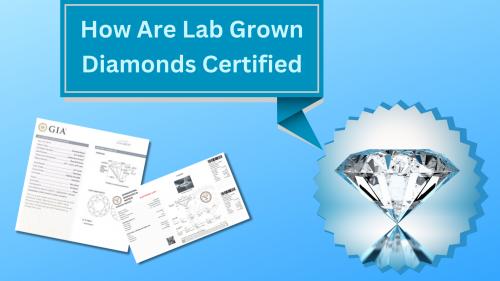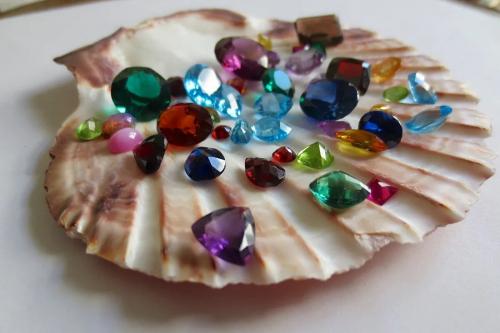How to create Lab Grown Diamonds?

Introduction
What are Lab-Grown Diamonds?
Lab-grown diamonds, also known as synthetic diamonds, are diamonds created in controlled laboratory environments using advanced technological processes that mimic the natural conditions under which diamonds form in the Earth's mantle. These diamonds are virtually identical to their natural counterparts in terms of chemical composition, physical properties, and optical brilliance.
Importance and Benefits of Lab-Grown Diamonds
The production of lab-grown diamonds has revolutionized the diamond industry by providing an ethical and sustainable alternative to mined diamonds. Lab-grown diamonds offer significant benefits, including a reduced environmental footprint, lower cost, and the elimination of ethical concerns associated with diamond mining.
Understanding Natural Diamonds
Formation of Natural Diamonds
Natural diamonds are formed deep within the Earth's mantle under conditions of extreme heat and pressure over billions of years. Carbon atoms bond together in a crystalline structure, resulting in the creation of diamonds. These diamonds are brought to the surface through volcanic eruptions, where they can be mined.
Characteristics of Natural Diamonds
Natural diamonds are renowned for their hardness, brilliance, and thermal conductivity. They are the hardest known natural material and are used in various applications, from jewelry to industrial cutting and grinding tools.
The Science Behind Lab-Grown Diamonds
The Basics of Carbon
Carbon, the essential element in diamonds, exists in various forms, including graphite and diamond. The arrangement of carbon atoms determines whether the substance is a soft graphite or a hard diamond. In diamonds, each carbon atom is bonded to four other carbon atoms in a tetrahedral structure, giving diamonds their exceptional hardness.
Key Differences Between Natural and Lab-Grown Diamonds
While natural and lab-grown diamonds share identical chemical and physical properties, their origins differ. Natural diamonds form over billions of years in the Earth's mantle, while lab-grown diamonds are created in weeks to months in a lab. Advanced equipment replicates the natural diamond-forming process, producing diamonds that are indistinguishable from natural ones to the naked eye.
Methods of Creating Lab-Grown Diamonds
High Pressure High Temperature (HPHT)
Overview of HPHT Method
The HPHT method replicates the natural diamond formation process by subjecting carbon to high pressure and high temperature. This method was first developed in the 1950s and remains one of the primary techniques for producing lab-grown diamonds.
Steps in HPHT Process
- Preparing the Carbon Source: A carbon source, often graphite, is placed in a press along with a metal catalyst.
- Applying High Pressure and High Temperature: The press exerts pressures of about 5-6 GPa (gigapascals) and temperatures of around 1,500°C to 2,000°C.
- Cooling and Extracting the Diamond: After the diamond forms, the press is slowly cooled, and the diamond is extracted and cleaned.
Chemical Vapor Deposition (CVD)
Overview of CVD Method
The CVD method involves depositing carbon atoms onto a diamond seed crystal, growing layer by layer to form a diamond. This technique allows for the creation of larger and high-quality diamonds and offers greater control over the diamond's properties.
Steps in CVD Process
- Preparing the Diamond Seed: A small diamond seed is placed in a CVD chamber.
- Introducing Carbon-Rich Gas: A mixture of gases, typically hydrogen and methane, is introduced into the chamber and ionized into plasma.
- Depositing Carbon Layers: Carbon atoms from the plasma deposit onto the diamond seed, gradually building up layers of diamond.
- Finalizing the Diamond: The diamond is cooled, extracted, and polished.
Equipment and Materials Needed
Essential Equipment for HPHT
- High-pressure press
- Heating elements
- Carbon source (e.g., graphite)
- Metal catalyst
Essential Equipment for CVD
- CVD chamber
- Gas supply (hydrogen, methane)
- Plasma generator
- Diamond seed crystals
Quality of Raw Materials
The quality of the raw materials used in the HPHT and CVD processes significantly impacts the final diamond's quality. High-purity carbon sources and carefully selected diamond seeds are crucial for producing high-quality lab-grown diamonds.
Detailed Steps in the HPHT Process
Preparing the Carbon Source
The carbon source, usually in the form of graphite, is prepared and placed into a high-pressure press. The press also contains a metal catalyst, such as nickel, cobalt, or iron, which facilitates the transformation of carbon into diamond.
Applying High Pressure and High Temperature
The press applies pressures between 5 and 6 GPa and temperatures ranging from 1,500°C to 2,000°C. Under these conditions, the carbon atoms rearrange into a diamond structure.
Cooling and Extracting the Diamond
Once the diamond has formed, the press is gradually cooled. The diamond is then extracted from the press, cleaned, and any metal catalyst residues are removed.
Detailed Steps in the CVD Process
Preparing the Diamond Seed
A diamond seed, often a thin slice of diamond, is placed inside the CVD chamber. The seed acts as a substrate for the carbon atoms to deposit onto.
Introducing Carbon-Rich Gas
A mixture of hydrogen and methane gases is introduced into the CVD chamber. These gases are ionized into plasma using a microwave or radio frequency generator.
Depositing Carbon Layers
The carbon atoms in the plasma attach to the diamond seed, forming a diamond layer by layer. This process continues until the desired diamond size is achieved.
Finalizing the Diamond
The diamond is cooled and extracted from the CVD chamber. It undergoes a series of cleaning and polishing steps to remove any impurities and enhance its brilliance.
Quality Control and Certification
Testing for Diamond Quality
Lab-grown diamonds undergo rigorous testing to ensure they meet quality standards. This includes checking for clarity, color, cut, and carat weight. Advanced tools like spectrometers and microscopes are used for detailed analysis.
Certification Standards
Reputable gemological laboratories, such as the Gemological Institute of America (GIA) and the International Gemological Institute (IGI), provide certification for lab-grown diamonds. These certificates validate the diamond's quality and authenticity.
Advantages of Lab-Grown Diamonds
Environmental Impact
Lab-grown diamonds have a significantly lower environmental impact compared to mined diamonds. The production process requires less land and water, and it generates minimal carbon emissions.
Ethical Considerations
Lab-grown diamonds eliminate the ethical issues associated with diamond mining, such as human rights violations and environmental degradation. Consumers can purchase these diamonds with confidence, knowing they are conflict-free.
Cost-Effectiveness
Lab-grown diamonds are typically 20-40% less expensive than natural diamonds of similar quality. This cost advantage makes them an attractive option for budget-conscious consumers.
Applications of Lab-Grown Diamonds
Jewelry Industry
Lab-grown diamonds are becoming increasingly popular in the jewelry industry. They offer the same brilliance and durability as natural diamonds, making them ideal for engagement rings, necklaces, earrings, and other fine jewelry.
Industrial Applications
Beyond jewelry, lab-grown diamonds have various industrial applications. They are used in cutting, grinding, drilling, and polishing tools due to their exceptional hardness and thermal conductivity.
Challenges in Creating Lab-Grown Diamonds
Technical Challenges
Producing lab-grown diamonds requires advanced technology and precise control of production conditions. Achieving the desired quality and size can be challenging and requires continuous research and development.
Market Acceptance
While lab-grown diamonds are gaining popularity, some consumers still prefer natural diamonds due to their perceived rarity and traditional value. Educating consumers about the benefits of lab-grown diamonds is crucial for wider market acceptance.
Future of Lab-Grown Diamonds
Innovations in Production Techniques
Ongoing research and innovation are expected to further improve the efficiency and quality of lab-grown diamond production. Advances in technology may lead to even larger and higher-quality diamonds at lower costs.
Market Trends
The market for lab-grown diamonds is projected to grow significantly in the coming years. Increased consumer awareness and demand for ethical and sustainable products will drive this trend, positioning lab-grown diamonds as a major player in the gemstone market.
Conclusion
Lab-grown diamonds represent a remarkable achievement in science and technology, offering a sustainable and ethical alternative to natural diamonds. With their growing popularity and numerous benefits, lab-grown diamonds are set to shine brightly in the future of the diamond industry.









Comments